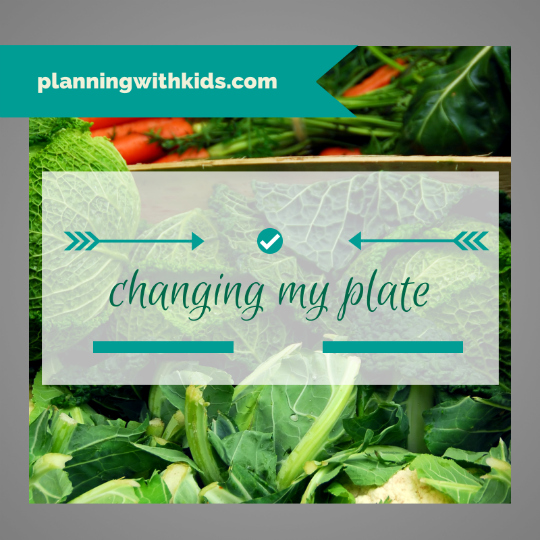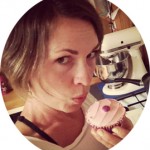 This post is part of a regular series focusing on making small changes to improve our health. I shared my journey with changing my diet and moving to a clean eating approach which you can read here. I also had the lovely Katie Rainbird from Katie 180 undertake an analysis of my food intake for one day in that post, which was another step in the right direction.
This post is part of a regular series focusing on making small changes to improve our health. I shared my journey with changing my diet and moving to a clean eating approach which you can read here. I also had the lovely Katie Rainbird from Katie 180 undertake an analysis of my food intake for one day in that post, which was another step in the right direction.
Together we also offered the same opportunity to readers of Planning With Kids. We were blown away with the response and while I can’t guarantee will get to all of them this year, Katie has been busy working on many of the submissions already and we will publish as many as we can.
It is not possible for Katie to cover off everything in these posts. The aim is for her to find some small things you can change to what you are putting on your plate to help you achieve your current goal for your eating habits. You can read previous Changing my plate posts by clicking here.
Changing my plate – Josephine’s day
 Katie Rainbird (AKA Katie180) is a Sydney-based Nutritionist who is just as likely to be found jogging as she is baking. She is a mother to two, a keen home cook, prefers to get around in her workout gear and has a major passion for the written word. You can learn more at www.katie180.com.au.
Katie Rainbird (AKA Katie180) is a Sydney-based Nutritionist who is just as likely to be found jogging as she is baking. She is a mother to two, a keen home cook, prefers to get around in her workout gear and has a major passion for the written word. You can learn more at www.katie180.com.au.
Katie reviewed what a reader Josephine* submitted that she ate in a 24 hour period (*not real name as the reader would like to stay anonymous). This is what Katie had to say about her day:
What is your current goal with your eating habits?
Lose weight following removal of ovaries.
Breakfast
7.30 am at home
Bowl of Special K with vanilla yoghurt and lite milk
Water 250mls to drink
Switch to a 1/3 cup whole oats with a 1/4 cup mixed seeds: go and buy a packet each of sunflower seeds, pumpkin seeds, linseeds and chia seeds, put them all into a big container then scoop out a 1/4 cup and mix them into your oats. Soak them with whole milk. You are better off with whole milk: it will deliver fat-soluble vitamins, take longer to break down which increases satiety and have a slower impact on blood sugar levels. We KNOW now that fat is “good” and when it comes to milk it’s certainly the case.
Lunch
Home made. 6-8 sour cream rice cakes with lite Philadelphia cream cheese, avocado, cheese, tomato
Dinner
8pm. Bowl of spaghetti bolognase. Home made.
Excellent. Always add a handful of leafy greens into your pasta bowl before you add the pasta in, this way you’ll eat less pasta and more greens!
Snack 1
10.15. Chic chip muesli bar or banana.
Rather than store bought muesli bars make your own, here is a recipe for a protein rich bar from my blog: Toasted quinoa and peanut bars
Snack 2
Afternoon tea. 3.30. Home. Few mouthfuls of yoghurt
This is OK but what kind of yoghurt is it? Try to choose a sugar free, full fat variety and plump it up with a drizzle of molasses or honey (mineral rich) and perhaps a handful of nuts.
Snack 3
N/A
Dessert
No dessert except when dining out.
Nutritional supplements
Caltrate
Selenium
I don’t “like” Caltrate. If you are taking this for bone then I have preferred retail options. However, it is without my scope as a practitioner to switch people from one supplement to another particularly for something such as bone health. If you’re keen to know some other options please contact me directly. Why just selenium? Antioxidant? Thyroid?
Daily fluid intake
Water 2 plus L per day
No coffee or tea
No alcohol
Occasional lemon squash and mineral water
Fine. Good water intake.
Any further information you’d like to share or special dietary requirements to factor in?
I am allergic to fish and other seafood. I suffer with eczema, frequent bloating and feeling uncomfortable after eating. Constipation can be an issue. My diet from yesterday is my attempt at trying a more paleo-type diet in an effort to address the issues mentioned.
Katie’s summary
I’ve done some reading on the removal of ovaries and I can see that bone density can be an issue as well as an increased risk of heart disease so now I *think* I have a clearer picture in my mind of why you’re taking Caltrate and selenium. Focus on your bone nutrient foods: leafy greens, nuts, seeds, oily fish, liver oils, eggs. Actually Nicole has a post on foods for bone health which has a comprehensive list! {Yes Katie wrote this excellent post for me after I fractured my pelvis – Osteoporosis – Diet and Lifestyle} The minerals magnesium and calcium, both indicated for the health of the skeleton are also required by the muscle tissue of the heart for contractility so you’ll benefit there also. All the very best, Katie.
Further reading
Disclaimer
Katie is a qualified nutritionist (Adv. Dip. Nutr. Med.).
Any diet or lifestyle changes that you implement as a result of reading this blog are your own responsibility.
This blog does not provide medical advice, any particular health conditions must be managed by your own health professional.
The content of this blog is not intended to be a substitute for professional medical advice, diagnosis or treatment.
Always seek the advice of your physician or other qualified health provider with any questions you may have regarding a medical condition. Never disregard professional medical advice or delay in seeking it because of something you have read on this blog.
